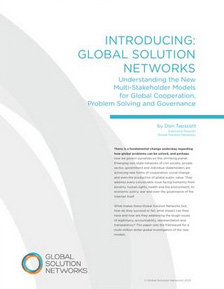This is an adapted excerpt from the recently released book “Blockchain Revolution: How the Technology Behind Bitcoin Is Changing Money, Business, and the World.”
Our global financial system moves trillions of dollars, serves billions of customers and supports a global economy worth more than $100 trillion. Imagine what it could do, were it not in such shoddy condition. It is antiquated, a kludge of industrial technologies and paper-based processes dressed up in a digital wrapper. It is centralized, vulnerable to data breaches, systems failure and terrorist attack. It is exclusive, denying billions of people access to basic financial tools. It is opaque, baffling monetary policy makers and financial regulators, thanks to the compartmentalization of oversight. And it is monopolistic, lobbying for the status quo and stifling disruptive innovation.
Enter blockchain, the vast global distributed ledger running on millions of devices and open to anyone, where not just information but anything of value — money, equities, bonds, titles, deeds, contracts and virtually all other kinds of financial assets can be moved and stored securely and privately– and where trust is established, not by powerful intermediaries like banks, governments and technology companies, but rather through mass collaboration and clever code.






